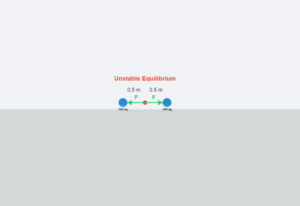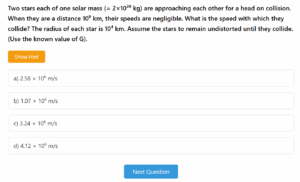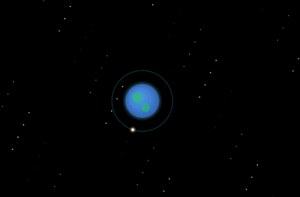Gravitational Intensity in Hemispherical Shell
Interactive 3D Physics Simulation
Physics of Gravitational Intensity
This simulation demonstrates the gravitational intensity at the center of a hemispherical shell with uniform mass density, illustrating why the correct answer is direction c (downward) in the original problem.
Key Concept: Gravitational intensity (E) is defined as the gravitational force per unit mass at a point in space. For extended bodies, it's calculated by integrating contributions from all mass elements.
Mathematical Foundation
The gravitational intensity at point P due to a mass element dm is:
dE = G·dm·r̂ / r²
Where G is the gravitational constant, r is the distance to dm, and r̂ is the unit vector pointing from dm to P.
Complete Spherical Shell
For a complete spherical shell:
- The gravitational intensity inside is zero due to perfect symmetry
- All force components cancel out in all directions
- This is a classic result from Newton's Shell Theorem
Hemispherical Shell
When we consider just a hemisphere:
- The symmetry is broken in the vertical (y) direction
- All mass elements contribute a downward (negative y) component
- Horizontal (x and z) components cancel out due to symmetry about the y-axis
- The net gravitational intensity points downward (direction c)
Simulation Controls: Adjust the visualization parameters to explore how different configurations affect the gravitational intensity. The complete sphere shows the reference case where intensity is zero inside.



